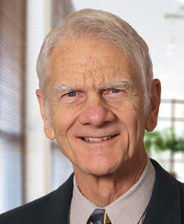Introducing Pocket MD
Download PDF
Training and Continuing Education for Healthcare Professionals
 In order to provide quality care for their patients with ADHD, healthcare professionals need the best information available. Finding reliable, trustworthy, up-to-date content on ADHD can be a challenge—even for treatment professionals.
In order to provide quality care for their patients with ADHD, healthcare professionals need the best information available. Finding reliable, trustworthy, up-to-date content on ADHD can be a challenge—even for treatment professionals.
Pocket MD is a new, podcast-based course provided by CHADD’s National Resource Center on ADHD in collaboration with the US Centers for Disease Control and Prevention to help prepare physicians, physician assistants, and advanced practice nurses to effectively diagnose, treat, and manage ADHD in children and adults. The podcasts are hosted on CHADD’s website on its Pocket MD webpage.
Each Pocket MD podcast features a conversation between two leading ADHD experts on topics relevant to medical professionals. Continuing education (CE) credits are available for this training. The CDC is jointly accredited by the Accreditation Council for Continuing Medical Education (ACCME), the Accreditation Council for Pharmacy Education (ACPE), and the American Nurses Credentialing Center (ANCC), to provide continuing education for the healthcare team.
Throughout the course, the experts address the barriers providers often must overcome to provide ADHD care. They lay out a plan for systematically managing medication, considering differences in formulations, medication monitoring, and managing side effects. They elaborate behavioral management interventions and discuss how to help patients implement behavioral strategies as part of treatment. Practitioners will improve their ability to personalize care in order to meet individual patient needs and collaborate effectively.
Included here are edited excerpts from the transcripts for two of these podcasts. Be sure to share this new training and continuing education opportunity with the professionals you consult for ADHD care, whether for yourself or your loved ones.
 L. Eugene Arnold, MD
L. Eugene Arnold, MD
professor emeritus of psychiatry and behavioral health, Ohio State University; CHADD’s resident expert
 Mary Solanto, PhD
Mary Solanto, PhD
clinical and research psychologist; professor of pediatrics and psychiatry, Hofstra-Northwell School of Medicine
Dr. Eugene Arnold: First, talk about what ADHD really is: how would we describe it and define it?
Dr. Mary Solanto: ADHD is a neurodevelopmental disorder, and it’s characterized by difficulties related to attention, hyperactivity, or impulsivity, or any combination of those. It’s manifested early in life, by the criteria at least by age twelve, and we have certain characteristic difficulties in each of those domains.
Dr. Arnold: Would you go ahead and describe those?
Dr. Solanto: So, with respect to inattention, there are difficulties manifested as failure to listen, short attention span for tasks, poor attention to detail resulting in errors on academic and other tasks, forgetting things, losing things, having a lower tolerance for tasks that require efforts, such as homework. Hyperactivity can manifest as restlessness, fidgetiness, or by running around, difficulty remaining seated, often described as being driven by a motor. It is important to note, though, that a child can have ADHD and not necessarily be running around. A child can be considered hyperactive, even if they are primarily fidgety or restless—and this is important, because I think parents and teachers might only identify a child who is literally running around. Impulsivity is manifested by difficulty waiting, taking turns, by interrupting, intruding on other activities; we may describe this being impatient as the overarching feature. I would also add that impulsivity is highly correlated with hyperactivity, and so those two are considered to represent a single dimension for purposes of describing the disorder for any individual child.
Dr. Arnold: How common is this syndrome among children?
Dr. Solanto: Well, estimates have varied. I think we have some very good estimates from studies done in the 2000s that have examined large-scale birth cohorts of children who were diagnosed—for example, there was a study done in Rochester, Minnesota—and these studies have yielded a rate of 8% for school-aged boys, primarily. More recently, the Centers for Disease Control reported a rate of 11% for boys between age seven and eleven. But it’s important to note that those children were not actually examined by a physician and diagnosed; these numbers come from the response of parents to the simple question, “Has your child ever been diagnosed with ADHD?” So, I think that figure is less reliable than the one that involved examination diagnosis by physicians.
Dr. Arnold: There is some doubt then about the exact prevalence, but we know it’s very common.
Dr. Solanto: It is quite common, and yes, there’s variation in the estimates of prevalence.
Dr. Arnold: Does this rate decrease or increase or change in any way over the lifespan?
Dr. Solanto: Yes, it is pretty consistent through adolescence. There may be a decrease of maybe 25% of overall prevalence, and in adulthood it is estimated it may be that 60% are still experiencing some impairment from the symptoms. So, there is continuity, but there is also some change in maturation, as people get older, that might result in fewer symptoms.
Dr. Arnold: What causes ADHD?
Dr. Solanto: We understand ADHD to be primarily genetic in origin. I think there’s very convincing data from twin studies that have looked at the concordance rate between twins; so, that is the answer to the question, “If one twin has it, what is the likelihood that the other twin will also have it?” And these studies show that for identical twins, which share all the same DNA, the concordance rate is up around 80% or higher. However, for fraternal twins who were nonidentical and share as much genetic material as any two siblings, the concordance rate is much lower; it is more like about 33%. So, I think that’s very compelling evidence that this disorder is primarily genetic in origin.
Dr. Arnold: Does that mean that it is not mainly a problem of the parents not making the children behave?
Dr. Solanto: It is important that parents know that they are not the cause of ADHD. That does not mean to say, however, that their behavior, their response to the child, their management of the child has no impact. What they do can benefit the child, can help ameliorate the disorder, or can make it worse. On the positive side, there are parent behavior management training programs that can be very helpful in guiding parents on how to respond helpfully to these behaviors. On the other hand, we know that criticism, over-control, and negative feedback can have a deleterious impact.
 L. Eugene Arnold, MD
L. Eugene Arnold, MD
professor emeritus of psychiatry and behavioral health, Ohio State University; CHADD’s resident expert
 Margaret H. Sibley, PhD
Margaret H. Sibley, PhD
clinical psychologist; associate professor of psychiatry and behavioral sciences, University of Washington School of Medicine; researcher, Seattle Children’s Hospital
Dr. Eugene Arnold: Before we begin, I might just say that there are two evidence-based classes of treatment for ADHD. One is the FDA-approved medications and the other is behavioral interventions. And we’ll be focusing today on the behavioral and other non-pharmacological interventions for ADHD. Dr. Sibley, could you describe in general what those are?
Dr. Margaret Sibley: I’ll start with what interventions look like in childhood. One of the main forms of behavioral intervention for children with ADHD is behavioral parent training, a treatment that focuses on teaching parents practical everyday strategies that they can use in order to increase good behaviors and minimize negative behaviors in the home setting. Another piece of behavior therapy for younger children is classroom behavior management: establishing clear rules and goals and expectations for a child in the classroom and then delivering rewards, whether it’s through a token economy system or through some sort of reward system in the classroom, in order to motivate the child to meet those expectations.
In terms of social skills, there’s actually not a lot of evidence for social skills treatments for ADHD. Social skills groups and social skills training has not been shown to be highly effective, and so that’s an area that we’re still trying to learn how to improve for kids with ADHD.
When kids with ADHD get older and they start reaching adolescence, the nature of those behavioral treatments changes a little bit. We start focusing more on teaching kids skills that they can apply in their daily life. And because their brains, as they get older, are capable of more learning and capable of more independent application of those skills, we can start teaching them organization skills strategies, time management strategies, cognitive strategies, to overcome difficulties like procrastination. And then usually what we do is partner with parents or other adults in their lives, to create rewards and consequences for the application of those skills. For example, we can teach a teenager with ADHD how to write every day in a daily planner to keep track of their homework assignments and to keep their schedules straight, and then we can make a rule at home that is overseen by the parents, that all electronics time has to wait until after homework is done, in order to help kids learn to use those skills independently without a lot of help and reminding from their parents.
Dr. Arnold: Just for completeness, another area of interventions is called complementary and alternative, which includes things like nutritional interventions, diet, biofeedback, transcendental meditation, and so forth, which have varying levels of evidence and are under study by groups in various parts of the country. But are there other components of the behavioral interventions and educational interventions that you mentioned that should be brought up?
Dr. Sibley: I think it’s important for people to understand what some of the key principles of behavior management are, that essentially transcend all of these treatments and sort of unite them as behavior therapies. One of them is defining clear expectations for behavior, whether that is that a child needs to raise their hand before speaking, or that an adolescent needs to get all of their homework done by 6:00 PM. It’s teaching strategies to give positive attention or contingent rewards to good behaviors and to minimize negative attention to negative behaviors. So, pieces of that could be ignoring small negative behaviors by children like complaining or whining, instead of arguing with kids and then escalating conflicts.
It’s also applying strategies like point systems in the home or the school setting, where over time kids can accumulate points for good behaviors and then rewards for those behaviors, and using principles like what we would call the Premack principle: making all exciting, enjoyable activities wait until responsibilities for the day are done. Then there are also strategies that we can use for really disruptive, escalated behaviors, like timeout in younger children. In teenagers, it’s things like taking away a really important privilege like driving if something like marijuana use is discovered.
All of these treatments, though they may look different for different ages, have something in common. They’re using basic behavioral principles to try to motivate children and adolescents to display appropriate behavior, which is hard for people with ADHD because they often struggle with self-control.
Other Articles in this Edition
Is ADHD Related to Creativity?
LEAP: Promoting a Healthy Lifestyle
ADHD and the Myth of the Bad Parent
Know What They Need: Help Your Child Recharge and Review This Summer
Disclose Your ADHD? What to Consider First
Your Strengths Are Your Superpowers
